Understanding Cancer
Chronic Myeloid Leukaemia (CML Cancer)
Chronic Myeloid Leukaemia is a rare, slow-developing leukaemia in children and young people
Chronic myeloid leukaemia, abbreviated as ‘CML’, in children is very rare.
Most childhood leukaemias are ‘acute’ meaning that they develop and progress rapidly. CML is a chronic leukaemia – meaning it develops slowly, often over many years.
CML in children is rare, with around 5 cases per year in the UK. In addition, there are around 28 cases in teenagers and young adults each year.
What is chronic myeloid leukaemia?
Leukaemia is a cancer of the white blood cells.
White blood cells help to fight infection. There are two different types of white blood cell lymphoid cells (lymphocytes) and myeloid cells. Chronic myeloid leukaemia affects the myeloid cells.
Normally the white blood cells, which are produced in the bone marrow, repair and reproduce themselves in an orderly and controlled way. In leukaemia, however, the process gets out of control and the cells continue to divide but do not mature.
These immature dividing cells – known as blast cells – fill up the bone marrow and stop it making healthy blood cells. As the blast cells are immature, they cannot work properly. This puts the child at increased risk of infection. The overproduction of white blood cells also interferes with the production of healthy red blood cells and platelets, leading to symptoms of leukaemia such as anaemia and bruising.
In contrast to acute leukaemias (such as acute myeloid leukaemia and acute lymphoblastic leukaemia), this happens very slowly in CML.
There are three different stages in the development of chronic myeloid leukaemia:
- Chronic phase. There may be no symptoms of leukaemia, but blast cells are present in the blood and bone marrow. This phase can last several years before undergoing transformation to the second, accelerated phase.
- Accelerated phase. An increased number of blast cells are found in the blood and marrow and there is evidence that the number of normal cells is decreasing. This phase lasts three to nine months.
- Blast phase. Also called a ‘blast crisis’. During the third and final phase, the disease resembles acute leukaemia. More than 30% of bone marrow and blood cells are blast cells. Without effective treatment (see below) the disease is usually fatal within three to six months of entering the blast phase.
Chronic Myeloid Leukaemia symptoms
With Chronic Myeloid Leukaemia, there are usually no symptoms in the early stages. Often it may be discovered when the child is having a routine blood test for other reasons.
When symptoms of chronic myeloid leukaemia do occur, they are quite general, including:
- Frequent, persistent infections
- Unusual bleeding and bruising
- Tiredness
- Paleness
- Breathlessness
There may also be bone/joint pain, abdominal pain and/or swollen lymph nodes.
Children may have some or all of these leukaemia symptoms.
How is CML in children treated?
Further tests will be carried out to provide doctors with as much information as possible about the child’s disease.
Unlike the acute leukaemias, CML in children cannot be cured by any type of chemotherapy although a new drug called Imatinib, a type of tyrosine kinase inhibitor, or TKI, can eliminate easily detectable signs of leukaemia from the blood, prolonging the chronic phase of the disease and delaying transformation to the accelerated stage. Imatinib cannot cure chronic myeloid leukaemia. It must be taken every day to prevent progression of the disease.
The only treatment that can cure CML in children is a stem cell transplant.
What are the survival rates for CML in children?
Five year survival from CML in children has increased in recent years thanks to the introduction of new drugs (known as tyrosine kinase inhibitors, or TKIs) that prevent, or at least delay, progression from the chronic phase to the accelerated phase.
In England, more than 85% of children survive CML for 5 years or more from diagnosis.
It is important to note, however, that these drugs do not cure CML. They have to be taken every day in order to prolong the chronic phase.
Andy’s Story
Read Andy’s victory against chronic myeloid leukaemia (CML):
In the summer of 2003, Andy was feeling tired and getting frequent headaches then started to experience problems with his vision. At a routine eye examination, the optician noticed blood clots forming on the back of Andy’s eyes and immediately referred him to the hospital for additional tests.
The results revealed Andy’s blood was thickening from the over-production of white blood cells and he was diagnosed with chronic myeloid leukaemia at the age of 18.
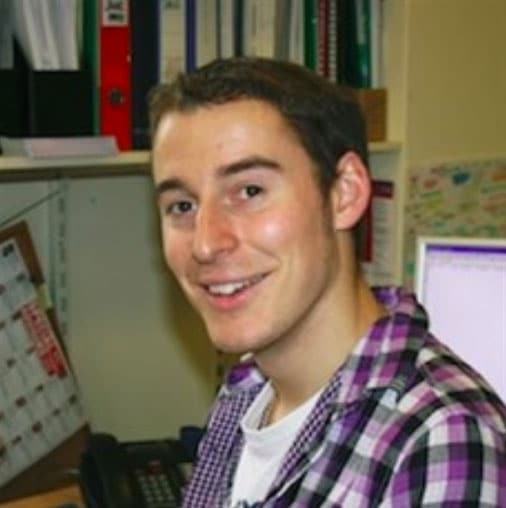
“This came as an enormous shock to me and the family,” says Andy. “We had only just come to terms with the news that my mum had terminal bowel cancer and I was just a week away from going to university.”
Andy began a blood filtering treatment and mild chemotherapy without delay but those treatments alone would not stop the chronic myeloid leukaemia. Doctors recommended a stem cell transplant. Andy needed a bone marrow match but unfortunately none of Andy’s family members were compatible. Like so many other leukaemia sufferers on the transplant list, Andy had to wait until a match could be found. Eventually, a match was found for Andy and he could move on to the next stage of treatment.
In May 2004 Andy began the first stage of the treatment. “First they clean out your kidneys, then they kill off all your existing bone marrow using chemotherapy,” Andy explains.
The side effects are not pleasant. “The chemo can’t distinguish one fast growing cell from another so it also attacks your hair, gums, and muscle tissue.”
The transplant was a success and, much to the amazement of his doctors, Andy started to produce white blood cells within a week. He was home a month after the transplant and was able to spend a few days with his mother before she sadly died. While the bone marrow transplant was successful, Andy was left exhausted and weak from the procedure. He continued to visit the hospital two or three times a week for anti-rejection drugs and follow-ups.
“I’ve now run five London Marathons – including three dressed as Mr Men characters – as well as Paris and New York in my bid to raise funds for the charity. So far I’ve raised over £40,000 but there is still a long way to go before I call it a day.”
Understanding the types of childhood cancer
Each type of childhood cancer has unique characteristics and treatment needs. Here, we provide an overview of the 10 primary types to help you learn more about the various diagnoses that impact young lives.

Topics on this page
- Chronic Myeloid Leukaemia (CML Cancer)
- Chronic myeloid leukaemia, abbreviated as ‘CML’, in children is very rare.
- What is chronic myeloid leukaemia?
- Chronic Myeloid Leukaemia symptoms
- How is CML in children treated?
- What are the survival rates for CML in children?
- Andy’s Story
- Understanding the types of childhood cancer
Related topics
We have lots of information to help you learn more about childhood cancer. From specific cancer types, to treatments and causes.

Childhood cancer charities unite to fund £700,000 of paediatric cancer research
Childhood cancer charities unite to fund £700,000 of paediatric cancer research Children with Cancer UK and CCLG: The Children &…
Read more Childhood cancer charities unite to fund £700,000 of paediatric cancer research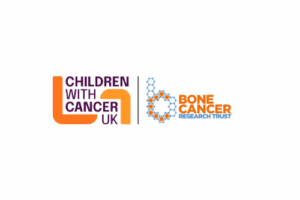
New research co-funded with the Bone Cancer Research Trust to develop next-generation immunotherapy for Ewing sarcoma
£1 million research investment to develop next-generation immunotherapy for Ewing sarcoma New research funded by Children with Cancer UK in…
Read more New research co-funded with the Bone Cancer Research Trust to develop next-generation immunotherapy for Ewing sarcoma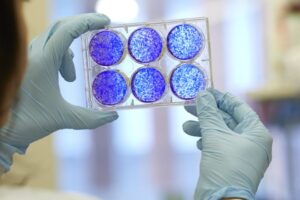
£1 million to develop next-generation immunotherapy for Ewing sarcoma
£1 million to develop next-generation immunotherapy for Ewing sarcoma New research funded by Children with Cancer UK in collaboration with the Bone…
Read more £1 million to develop next-generation immunotherapy for Ewing sarcoma
Fundraiser of the Month: Manchester Youth Super League
Fundraiser of the Month: Manchester Youth Super League Our Fundraiser of the Month for January 2026 goes to MYSL, who…
Read more Fundraiser of the Month: Manchester Youth Super League
Christmas Appeal 2025
Give the gift of hope this Christmas and buy a Corry bear to support children with cancer Children with Cancer…
Read more Christmas Appeal 2025
Fundraiser of the Month: Oli & Ann
Fundraiser of the Month: Oli & Ann Our Fundraiser of the Month for December 2025 goes to Oli & Ann,…
Read more Fundraiser of the Month: Oli & Ann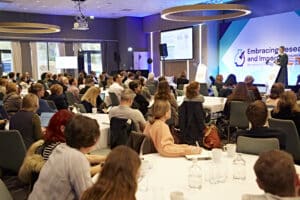
Childhood Cancer Conference 2025
Childhood Cancer Conference 2025: driving the shift from toxic therapies to targeted care Pioneering research shows how a simple blood…
Read more Childhood Cancer Conference 2025
Fundraiser of the Month: Arven & Arya
Fundraiser of the Month: Arven & Arya Our Fundraiser of the Month for October 2025 goes to Arven and Arya,…
Read more Fundraiser of the Month: Arven & Arya
A thrilling day of prehistoric adventure for children with cancer
A thrilling day of prehistoric adventure for children with cancer 24 October 2025 More than 100 children with cancer and…
Read more A thrilling day of prehistoric adventure for children with cancer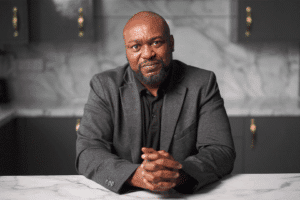
Bereaved father finds purpose after losing child to cancer
Bereaved father finds purpose after losing child to cancer Children with Cancer UK’s new film shares a family’s journey through…
Read more Bereaved father finds purpose after losing child to cancer